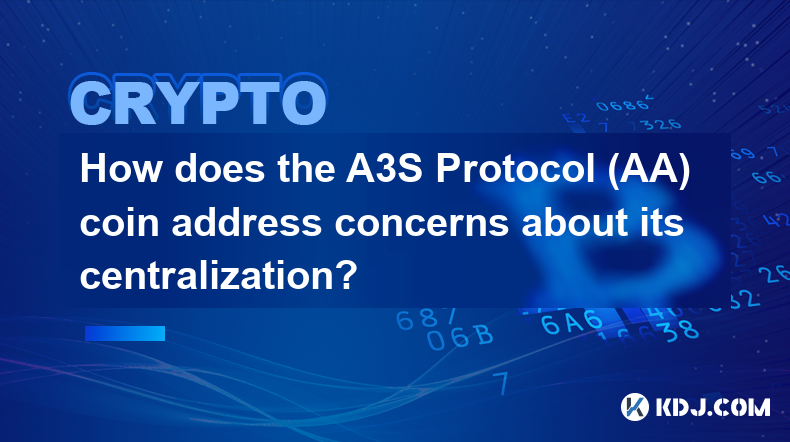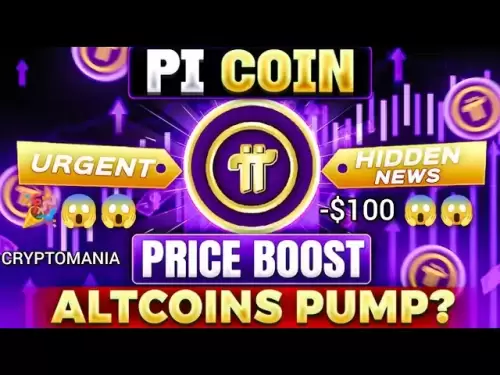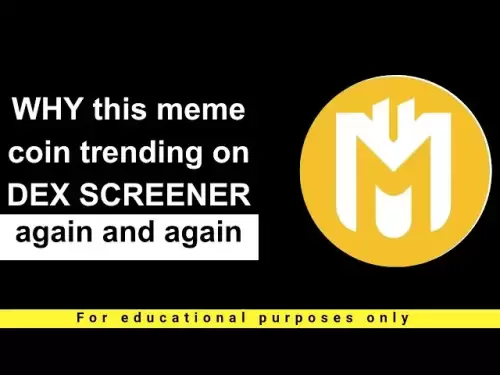-
 Bitcoin
Bitcoin $111,548.1016
2.37% -
 Ethereum
Ethereum $2,781.2216
6.39% -
 Tether USDt
Tether USDt $1.0004
0.01% -
 XRP
XRP $2.4146
4.58% -
 BNB
BNB $669.5226
1.36% -
 Solana
Solana $157.5751
3.99% -
 USDC
USDC $1.0002
0.02% -
 TRON
TRON $0.2899
0.84% -
 Dogecoin
Dogecoin $0.1821
6.47% -
 Cardano
Cardano $0.6259
6.40% -
 Hyperliquid
Hyperliquid $41.0040
5.60% -
 Sui
Sui $3.0919
6.42% -
 Bitcoin Cash
Bitcoin Cash $515.6573
2.88% -
 Chainlink
Chainlink $14.3144
2.51% -
 Stellar
Stellar $0.2885
11.60% -
 UNUS SED LEO
UNUS SED LEO $8.9746
-1.18% -
 Avalanche
Avalanche $19.5761
6.62% -
 Shiba Inu
Shiba Inu $0.0...01245
4.98% -
 Hedera
Hedera $0.1711
6.23% -
 Toncoin
Toncoin $2.8451
1.64% -
 Litecoin
Litecoin $91.0395
3.67% -
 Monero
Monero $324.5650
2.52% -
 Polkadot
Polkadot $3.6332
5.42% -
 Dai
Dai $1.0001
0.01% -
 Ethena USDe
Ethena USDe $1.0011
0.03% -
 Uniswap
Uniswap $8.4471
10.54% -
 Bitget Token
Bitget Token $4.4085
1.61% -
 Pepe
Pepe $0.0...01117
9.51% -
 Aave
Aave $303.3870
3.43% -
 Pi
Pi $0.4715
2.67%
How does the A3S Protocol (AA) coin address concerns about its centralization?
Dec 28, 2024 at 01:31 am

Key Points:
- The A3S Protocol employs a decentralized consensus mechanism based on Proof-of-Stake (PoS) and Delegated Proof-of-Stake (DPoS).
- Users can participate in the network by staking AA tokens, influencing block production and protocol governance.
- The protocol incorporates a reputation system to assess the reliability and trustworthiness of network participants.
- Decentralized applications (dApps) built on the A3S Protocol benefit from inherent decentralization, security, and scalability.
Addressing Centralization Concerns
1. Decentralized Consensus Mechanism:
- The A3S Protocol employs a PoS consensus where nodes validate transactions and add new blocks to the blockchain based on the number of AA tokens they hold.
- The higher the stake, the greater the probability of block creation and issuance rewards.
- DPoS is implemented as a second layer, where a group of delegates is elected by stakeholders to produce blocks and manage protocol parameters.
2. Stakeholder Participation and Governance:
- Token holders can actively participate in network decision-making by staking their AA coins.
- Stakeholders vote on proposals regarding protocol upgrades, fee adjustments, and other governance matters.
- The distribution of voting power among stakeholders ensures a balanced and decentralized decision-making process.
3. Reputation System:
- The A3S Protocol includes a reputation system to assess and incentivize participants' reliability and contributions.
- Participants can earn reputation points based on their participation in block production, voting, and other network activities.
- Validators with higher reputation receive priority in block production and are more likely to be selected as delegates.
4. Decentralized Application Support:
- The A3S Protocol is a substrate-based blockchain that supports the development and deployment of decentralized applications (dApps).
- dApps built on the A3S Protocol inherit the platform's decentralization, security, and scalability benefits.
- Developers can leverage the protocol's features to create applications that empower end-users and minimize central control.
FAQs:
Q: How does the A3S Protocol differ from other PoS-based networks?
A: A3S employs a hybrid PoS and DPoS consensus, allowing stakeholders to directly influence block production and participate in governance. It also incorporates a reputation system to incentivize network reliability.
Q: Can anyone become a delegate in the A3S Protocol?
A: Delegates are elected based on their stake and reputation. To become a delegate, users must actively participate in the network and maintain a high reputation score among stakeholders.
Q: What are the benefits of using dApps built on the A3S Protocol?
A: dApps on A3S benefit from the protocol's decentralized infrastructure, making them resistant to censorship and unauthorized control. They also inherit the platform's security and scalability advantages, ensuring data integrity and performance.
Clause de non-responsabilité:info@kdj.com
Les informations fournies ne constituent pas des conseils commerciaux. kdj.com n’assume aucune responsabilité pour les investissements effectués sur la base des informations fournies dans cet article. Les crypto-monnaies sont très volatiles et il est fortement recommandé d’investir avec prudence après une recherche approfondie!
Si vous pensez que le contenu utilisé sur ce site Web porte atteinte à vos droits d’auteur, veuillez nous contacter immédiatement (info@kdj.com) et nous le supprimerons dans les plus brefs délais.
-
 KEEP Échangez maintenant
KEEP Échangez maintenant$0.1157
59.34%
-
 M Échangez maintenant
M Échangez maintenant$0.3105
50.86%
-
 USELESS Échangez maintenant
USELESS Échangez maintenant$0.3095
38.61%
-
 BANANAS31 Échangez maintenant
BANANAS31 Échangez maintenant$0.0246
27.74%
-
 ZBCN Échangez maintenant
ZBCN Échangez maintenant$0.0037
25.54%
-
 MAGIC Échangez maintenant
MAGIC Échangez maintenant$0.1985
21.82%
- BlockDag mène le pack de crypto: une perspective 2025 sur Blockdag, Cardano, Litecoin et Polkadot
- 2025-07-10 10:50:12
- ONDO Price Watch: Traders Eye Key Resistance pour un objectif potentiel de 3 $
- 2025-07-10 10:50:12
- Bitcoin vs The Brésilien Real: naviguer la volatilité dans une guerre tarifaire
- 2025-07-10 11:10:12
- Firms de VC, Bitcoin et financement: une minute de New York sur l'avenir de la crypto
- 2025-07-10 11:10:12
- Cronos (CRO) saute 16% sur ETF Buzz: une prise de New York
- 2025-07-10 11:15:12
- Binance, Trésor et introductions en bourse: naviguer dans le paysage cryptographique en 2025
- 2025-07-10 11:30:12
Connaissances connexes

How to customize USDT TRC20 mining fees? Flexible adjustment tutorial
Jun 13,2025 at 01:42am
<h3>Understanding USDT TRC20 Mining Fees</h3><p>Mining fees on the TRON (TRC20) network are essential for processing transactions. U...

USDT TRC20 transaction is stuck? Solution summary
Jun 14,2025 at 11:15pm
<h3>Understanding USDT TRC20 Transactions</h3><p>When users mention that a USDT TRC20 transaction is stuck, they typically refer to ...

How to cancel USDT TRC20 unconfirmed transactions? Operation guide
Jun 13,2025 at 11:01pm
<h3>Understanding USDT TRC20 Unconfirmed Transactions</h3><p>When dealing with USDT TRC20 transactions, it’s crucial to understand w...

How to check USDT TRC20 balance? Introduction to multiple query methods
Jun 21,2025 at 02:42am
<h3>Understanding USDT TRC20 and Its Importance</h3><p>USDT (Tether) is one of the most widely used stablecoins in the cryptocurrenc...

What to do if USDT TRC20 transfers are congested? Speed up trading skills
Jun 13,2025 at 09:56am
<h3>Understanding USDT TRC20 Transfer Congestion</h3><p>When transferring USDT TRC20, users may occasionally experience delays or co...

The relationship between USDT TRC20 and TRON chain: technical background analysis
Jun 12,2025 at 01:28pm
<h3>What is USDT TRC20?</h3><p>USDT TRC20 refers to the Tether (USDT) token issued on the TRON blockchain using the TRC-20 standard....

How to customize USDT TRC20 mining fees? Flexible adjustment tutorial
Jun 13,2025 at 01:42am
<h3>Understanding USDT TRC20 Mining Fees</h3><p>Mining fees on the TRON (TRC20) network are essential for processing transactions. U...

USDT TRC20 transaction is stuck? Solution summary
Jun 14,2025 at 11:15pm
<h3>Understanding USDT TRC20 Transactions</h3><p>When users mention that a USDT TRC20 transaction is stuck, they typically refer to ...

How to cancel USDT TRC20 unconfirmed transactions? Operation guide
Jun 13,2025 at 11:01pm
<h3>Understanding USDT TRC20 Unconfirmed Transactions</h3><p>When dealing with USDT TRC20 transactions, it’s crucial to understand w...

How to check USDT TRC20 balance? Introduction to multiple query methods
Jun 21,2025 at 02:42am
<h3>Understanding USDT TRC20 and Its Importance</h3><p>USDT (Tether) is one of the most widely used stablecoins in the cryptocurrenc...

What to do if USDT TRC20 transfers are congested? Speed up trading skills
Jun 13,2025 at 09:56am
<h3>Understanding USDT TRC20 Transfer Congestion</h3><p>When transferring USDT TRC20, users may occasionally experience delays or co...

The relationship between USDT TRC20 and TRON chain: technical background analysis
Jun 12,2025 at 01:28pm
<h3>What is USDT TRC20?</h3><p>USDT TRC20 refers to the Tether (USDT) token issued on the TRON blockchain using the TRC-20 standard....
Voir tous les articles

























































































